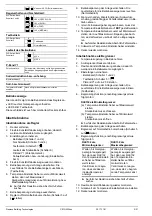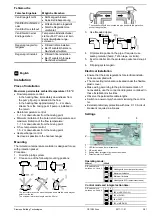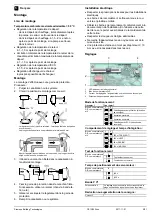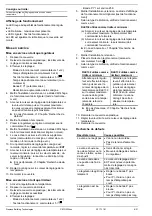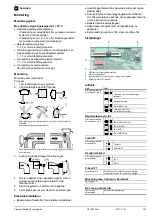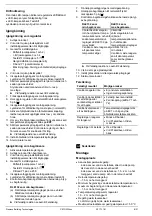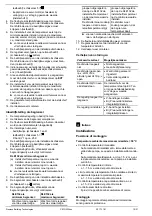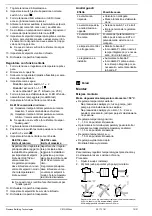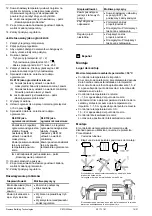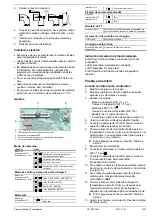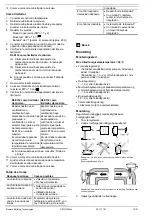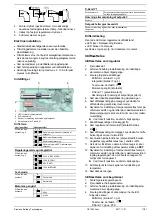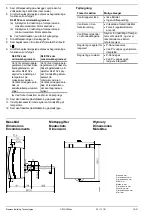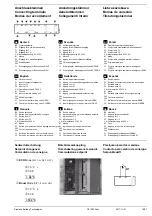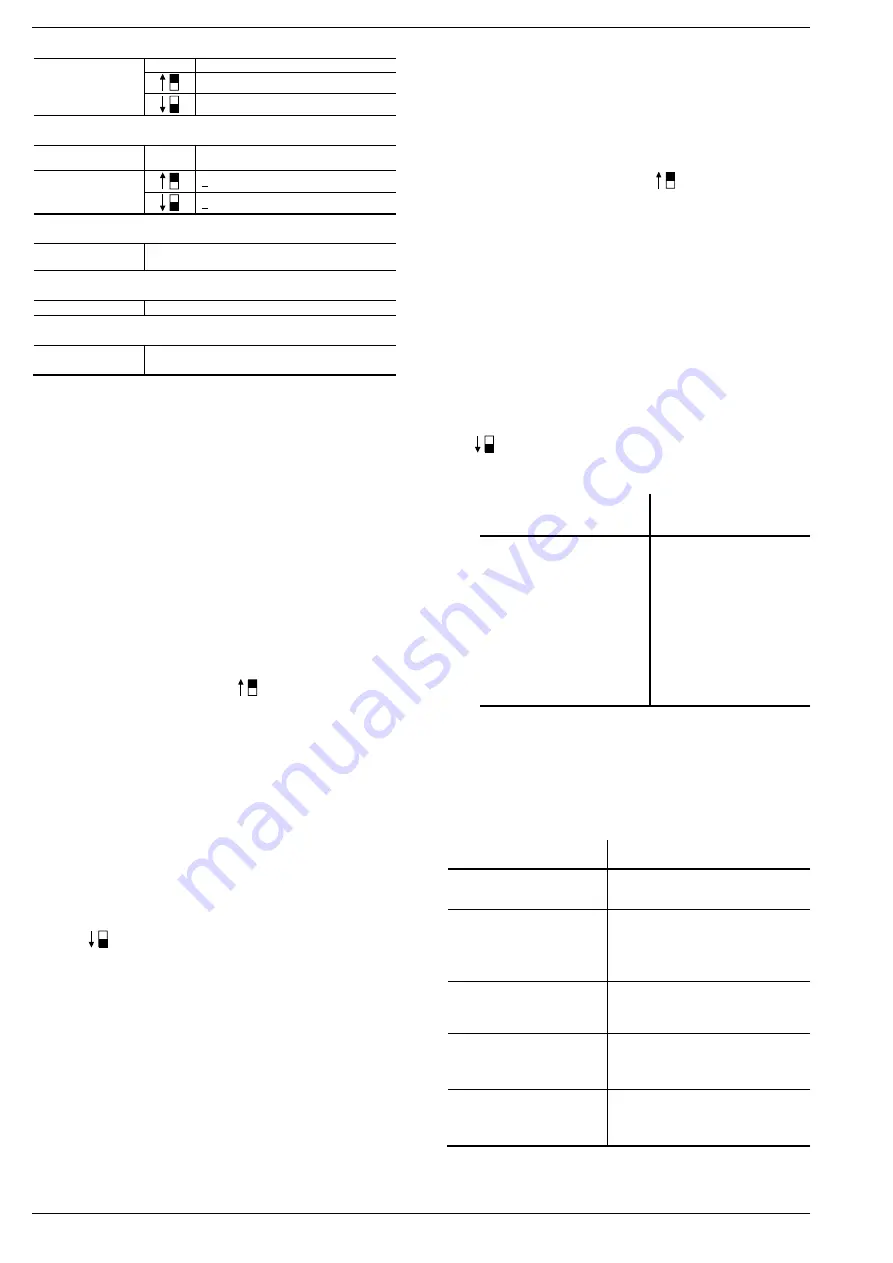
Siemens Building Technologies
CE1G3334xx
2017-11-01
4/21
Test mode:
DIP switch block,
switch no. 5
5
Test mode
Normal operation
Running time of actuator:
DIP switch block,
switch no. 6
6
≤30 s
≥120 s
P-band Y1
Potentiometer 4
Potentiometer setting should correspond to the
required range of the controller’s output signal
Setpoint increase / decrease
Slider 3
Setpoint or limit value:
Temperature setting
slider
Adjust after commissioning
Indication of operating state
The red LED indicates the controller’s operating state:
·
LED lit: Mains voltage present
·
LED flashes: In test mode
The LED is also visible when the cover is fitted.
Commissioning
When used as a controller
1. Remove housing cover.
2. Lift flexible plastic cover so that you can access the
setting elements.
3. Make the settings:
-
Operating mode (switches no. 1 and 2)
-
Integral action time (switches no. 3 and 4)
-
Test mode: Switch no. 5 =
-
Running time of actuator (switch no. 6)
-
P-band Y1 (potentiometer 4)
-
Setpoint increase or decrease (slider 3)
4. Replace flexible plastic cover.
5. Switch power on. LED for the operating state must
flash (test mode).
6. First, set temperature setting slider to the minimum
value, then to the maximum value: Actuating de-
vice(s) must travel to the minimum or maximum posi-
tion.
► If response is wrong, refer to “Troubleshooting”
7. Switch power off.
8. Switch controller to normal operation (set switch no.
5 to
).
9. Switch power on. LED for the operating state must
light up (normal operation).
10. If used, activate auxiliary functions (setpoint change-
over, load-dependent switching contact, etc.).
11. If a remote setting unit is used, set the controller’s
temperature setting slider to
EXT
.
12. First, set temperature setting slider to the minimum
value, then to the maximum value: Observe the con-
trol. The response may neither be too fast nor too
slow.
► If response is wrong, refer to “Troubleshooting”
13. Adjust the setpoint with the temperature setting slid-
er.
14. Replace housing cover.
When used as a limiter
1. Switch on the temperature control.
2. Remove housing cover.
3. Lift flexible plastic cover so that you can access the
setting elements.
4. Make the settings:
-
Operating mode (switches no. 1 and 2)
-
Test mode: Switch no. 5 =
-
P-band Y1 on approx. 25 K
5. Switch power on. LED for the operating state must
flash (test mode).
6. Check limit function depending on the type of limita-
tion:
RLE132 as a minimum limiter:
(a) Set temperature setting slider to the maximum
value: Actuator must close
(b) Set temperature setting slider to the minimum
value: Actuator must open
► If response is wrong, refer to “Troubleshooting”
7. Switch power off.
8. Switch limiter to normal operation (set switch no. 5 to
).
9. Check limit function depending on the type of limita-
tion:
RLE132 as a
minimum limiter:
RLE132 as a
maximum limiter
Wait until heating control-
ler has reached the
steady-state condition;
then, set the temperature
setting slider of the
RLE132 to the maximum
value:
Value must respond so
that the boiler return tem-
perature will rise
Wait until heating con-
troller has reached the
steady-state condition;
then, set the tempera-
ture setting slider of the
RLE132 to the minimum
value:
Value must respond so
that the temperature to
be limited will drop
► If response is wrong, refer to “Troubleshooting”
10. Replace flexible plastic cover.
11. Adjust the limit temperature with the temperature
setting slider.
12. Replace housing cover.
Troubleshooting
Wrong response
Possible causes
Valve does not respond
·
Valve not connected
·
No power supply
Valve travels in the
wrong direction
·
Selection of operating action
is wrong
·
Wrong controller terminal
used
Valve remains in one of
its end positions
Temperature setting slider is
set to EXT and there is no
remote setting unit connected
Control responds too
slowly
·
Reduce P-band
·
With PI mode, also reduce
integral action time
Control is instable
·
Increase P-band
·
With PI mode, also increase
integral action time


